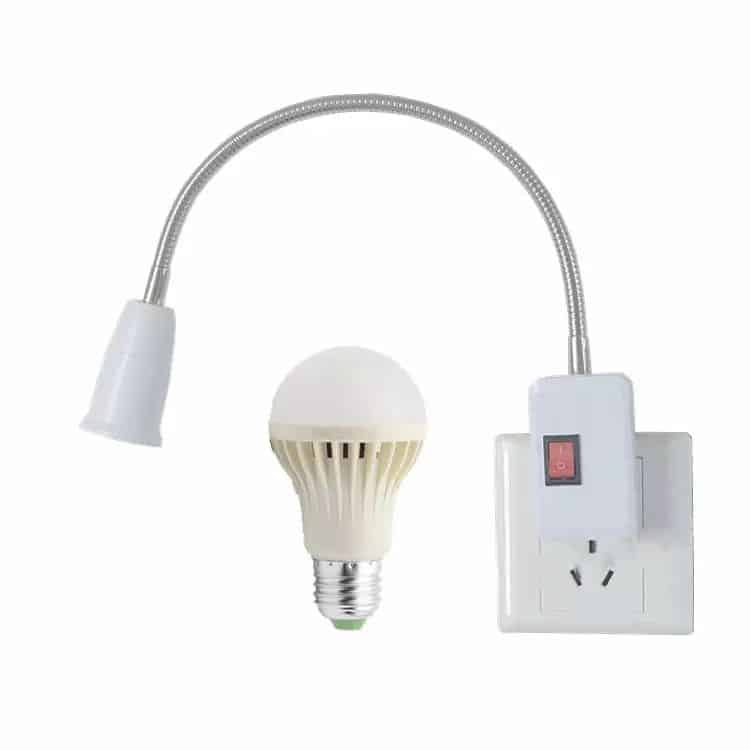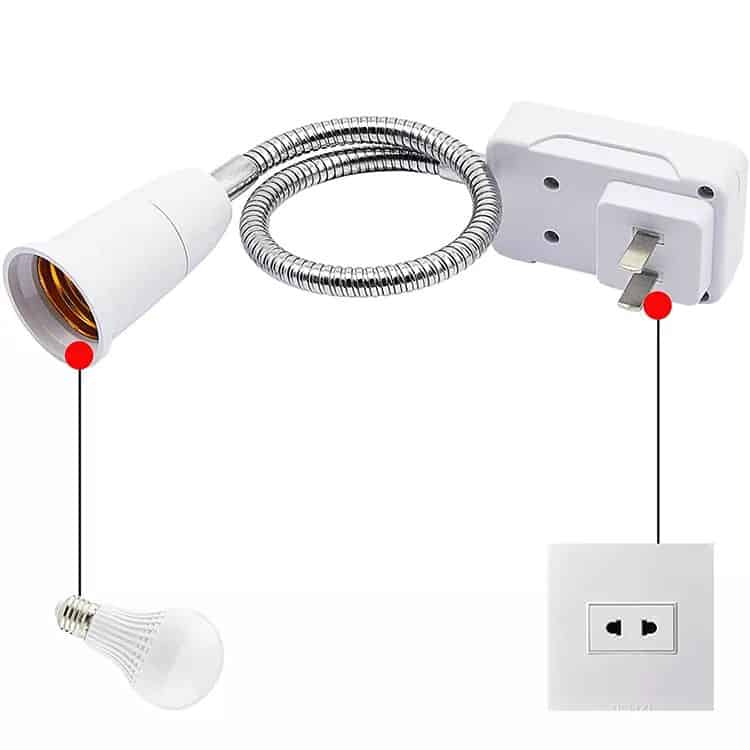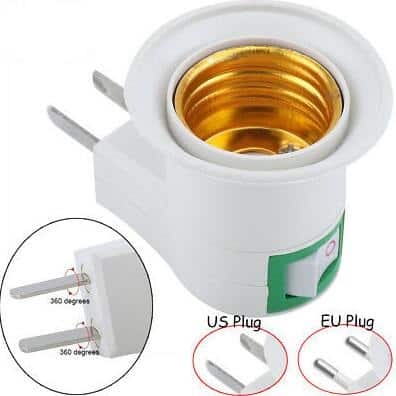A lot of people wonder if it’s safe and legal to have sockets without an on-off switch. They ask these questions when they’re worried about electrical safety and following the rules. We’ll answer these questions to see if switchless sockets meet safety standards and when you should use them.
It’s okay to have sockets without on-off switches if they are installed correctly and meet local regulations. You need to make sure the sockets have the proper certifications and are the right type for where you use them.
Even though they don’t have a switch, sockets that are made this way are common and used all the time. You can use these types of sockets in certain situations. Knowing when and how to use them will help you make sure everything is safe and legal. We’ll talk about why they make sockets without a switch, whether they’re safe, and if they’re legal.

Why Sockets without On-Off Switches Exist
Sockets without built-in switches serve a practical purpose. Many lighting installations, such as ceiling fixtures and recessed lights, are designed to operate through a central wall switch or circuit control, making an on-off switch on the socket itself redundant. Keyless sockets—like E26 and E27 types—are common examples of switchless sockets, and they provide an affordable and practical option for installations where the switch control is located elsewhere. This configuration keeps the setup simple, reducing costs for both materials and installation.
Switchless sockets are also common in commercial and industrial environments. For example, in factories or warehouses where lights are controlled remotely or by timers, sockets without switches streamline installation and simplify large-scale lighting systems. In such cases, switchless designs minimize the complexity of wiring and offer a more seamless setup for permanent installations.
Safety Considerations for Sockets without On-Off Switches
When assessing the safety of switchless sockets, adherence to strict electrical standards is paramount. Many switchless sockets comply with certifications like CE, UL, and RoHS, which indicate their suitability for safe usage. Such certifications are particularly important as they validate that the sockets meet rigorous requirements for insulation, heat resistance, and electrical safety. The CE marking, for instance, certifies compliance within Europe, while UL certification applies to safety standards in the United States. These approvals mean that switchless sockets have passed tests for temperature control, durability, and resistance to electrical shock.
The materials used in switchless sockets further support their safety. Porcelain and ceramic are common in switchless socket designs, as they withstand higher temperatures without degrading, which is crucial for high-wattage or prolonged-use applications. Similarly, bakelite—a durable plastic material—is often used for its flame-retardant properties. These materials allow sockets to handle high currents while minimizing the risk of overheating or accidental shocks.

Legal Requirements and Compliance by Region
Whether or not switchless sockets are allowed in installations depends heavily on regional regulations. In North America, the UL (Underwriters Laboratories) listing is a standard that certifies sockets for use in the U.S. and Canada, ensuring they meet local electrical safety codes. Similarly, CE certification is required in Europe, where sockets must also comply with electrical codes to prevent hazards. Meeting these regional certifications ensures that sockets—whether they have switches or not—adhere to essential safety protocols and electrical standards.
Commercial and industrial installations may have additional safety requirements. Certain workspaces, like high-risk areas or those with frequent machinery use, may mandate specific socket designs or require protective enclosures and external switch controls for added safety. In regions with stringent safety standards, like the EU and the U.S., safety certifications play a central role in determining whether sockets are suitable for switchless installation. Local building codes may further restrict the use of such sockets in residential and commercial spaces, so it’s vital to check regional regulations to ensure compliance.
Choosing the Right Socket Type
Selecting the appropriate socket type is essential to ensure safe and compliant installations. Different types of switchless sockets are suited for specific purposes and environments. For instance, E26 and E27 sockets are common options for standard lighting setups. E26 sockets are typically rated for 120V, often used in North American markets, while E27 sockets are rated for 240V and are prevalent in Europe. Though these two sockets are nearly identical in appearance, the voltage difference is significant, making it essential to choose the right type for the intended application.
It’s equally important to consider the wattage and heat tolerance of the socket. High-wattage lighting, which generates more heat, requires materials like ceramic or porcelain, which can handle the additional stress without compromising safety. Keyless options like GU10 or MR16 sockets are also widely used in modern lighting applications, especially in setups where the lighting system is controlled externally. Each socket type’s compatibility with local voltage and wiring standards ensures both safe and efficient operation.

Key Tips for Safe Use of Sockets without On-Off Switches
While switchless sockets are designed for safety, there are additional steps to maximize their safe use. Integrating external wall switches or circuit breakers is highly recommended, as this allows you to control power to the sockets safely and conveniently. A circuit breaker is particularly useful as it provides overload protection, automatically cutting off power in case of a fault or power surge. For added convenience, consider installing smart switches, which offer remote control over lighting and can enhance energy efficiency by automating light usage.
Regular maintenance and inspections also play a key role in safe socket use. Over time, sockets can wear out, especially in high-usage or high-traffic environments. Frequent inspections help identify any signs of wear, overheating, or damage early on, preventing possible hazards. In commercial and industrial settings, conducting inspections as part of routine maintenance can help detect issues with sockets that could compromise safety.
Alternatives and When to Avoid Switchless Sockets
For those who prefer additional safety features, alternative sockets with built-in switches are available. These designs integrate a control switch directly on the socket, adding an extra layer of control and allowing the light to be turned off at the socket itself. Some sockets also come with built-in safety features, such as surge protectors or thermal cutoffs, which provide protection from electrical overload and overheating, ensuring that the socket automatically shuts off in case of an emergency.
There are also environments where using a switchless socket may not be advisable. For instance, high-moisture areas such as bathrooms, kitchens, and industrial zones often require sockets with built-in switches or protective enclosures. In these areas, access to a dedicated on-off switch reduces the chance of electric shock and keeps the lighting fixtures safe from accidental power surges. Additionally, locations with high dust or particle exposure may benefit from sockets with sealed designs or protective casings that prevent contaminants from interfering with electrical connections.

Final Words:
The safety and legality of sockets without an on-off switch depend on meeting the right standards, being installed the right way, and being used in the right place. If you choose the right ones and use them correctly, they can be safe and okay.













